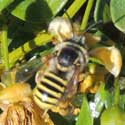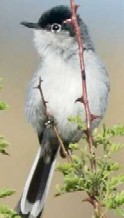Creosote Bush
Larrea tridentata
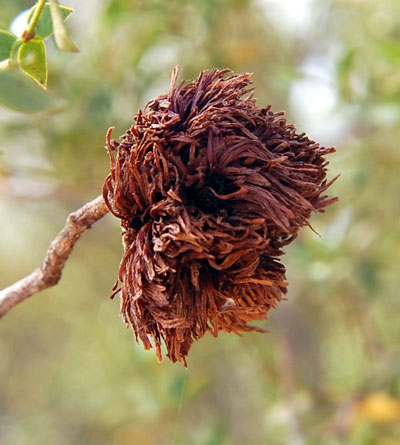
Bulldog Canyon, Maricopa Co., Arizona. 11 Oct. 2008. Dried gall caused by a midge, Asphondylia.
Black-tailed Gnatcatcher
Verdin
The growth at left was caused by the presence of tiny fly midge larvae belonging to the genus Asphondylia. A dozen or so maggots developed at the center while producing minute quantities plant hormone analogs that directed the plant's growth in favor of the parasites. Soon after the flies emerged the growth was aborted and died. It may remain on the plant for many years.
Zygophyllaceae -- Caltrop Family
Sponsored Links:
 Among the insects that feed on
Creosote Bush is a grasshopper called the Desert Clicker, so called because its incessant
clicking often seems to be the only activity during mid-day during the scorching summer
heat. It is colored similarly to the twigs and as the observer approaches it scoots to the
away side. Hearing them is easy - spotting one is a challenge.
Among the insects that feed on
Creosote Bush is a grasshopper called the Desert Clicker, so called because its incessant
clicking often seems to be the only activity during mid-day during the scorching summer
heat. It is colored similarly to the twigs and as the observer approaches it scoots to the
away side. Hearing them is easy - spotting one is a challenge.
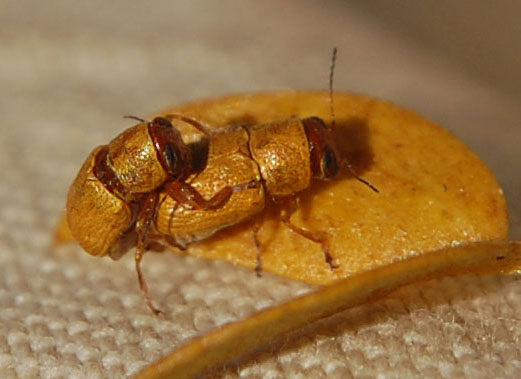 For insects, looking like what you eat
is often a matter of survival. That's because there are many sharp-eyed, insectivorous
birds and reptiles. As the leaves of creosote bush yellow and die they loose some of their
volatile, anti-feeding compounds, and become a food source for detritivores. These beetles,
Pachybrachis mellitus, feed as larvae on leaf litter and may feed as adults on the
yellow petals of the flowers when they are present.
For insects, looking like what you eat
is often a matter of survival. That's because there are many sharp-eyed, insectivorous
birds and reptiles. As the leaves of creosote bush yellow and die they loose some of their
volatile, anti-feeding compounds, and become a food source for detritivores. These beetles,
Pachybrachis mellitus, feed as larvae on leaf litter and may feed as adults on the
yellow petals of the flowers when they are present.
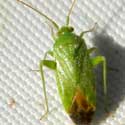 The green plant bug at right also can hide very effectively
on Creosote Bush. When that fails swift legs and a pair of wings ready to be unfolded for
use will aid in escape. Insectivorous birds like Verdins and
gnatcatchers
are also sharp-eyed and very quick guaranteeing that this evolutionary race will keep on
going.
The green plant bug at right also can hide very effectively
on Creosote Bush. When that fails swift legs and a pair of wings ready to be unfolded for
use will aid in escape. Insectivorous birds like Verdins and
gnatcatchers
are also sharp-eyed and very quick guaranteeing that this evolutionary race will keep on
going.
